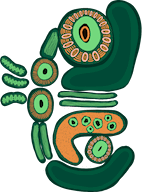
It’s normal to hear people say they’re nervous to see their dentist. Although hesitancy around dental appointments is common, there are many ways to overcome anxiety so you can ensure your oral health is being looked after.
What can lead to dental anxiety?
Dental anxiety or ‘dentophobia’ often stems from a bad or negative dental experience, usually in childhood. Some people feel very uncomfortable in the close physical presence of others, especially when lying back in a dental chair. Fear of pain, or experiencing more pain is another reason for avoiding dental treatment. Others may feel embarrassed about the condition of their teeth. Dental anxiety can also be triggered by the thought of dental equipment; sounds, needles and even the smell of a dental clinic.
Tips to overcoming dental avoidance
- Sometimes the first step of making an appointment can the hardest. When making your appointment, speak with the receptionist about your anxiety, as they can help ensure your appointment goes smoothly. The first appointment with your dentist may just be a conversation to help build trust, or they could recommend sedation options or strategies to help you relax.
- Deep breathing, progressive muscular relaxation and mindfulness can all be very helpful. Listen to your favourite music or a calming app through earphones during your appointment.
- Take your partner or a trusted friend with you for support.
- If a loss of control heightens your anxiety, ask the dentist to explain what they are doing. Some people like to have a mirror to watch what’s being done. Plan a signal you can give to stop the procedure, or if you need a break.

Can sleep dentistry help?
If you are a nervous or anxious patient, sleep dentistry could be your answer. Sleep Dentistry, also known as IV Sedation dentistry is a great way for patients to have their dental procedures performed whilst under IV Sedation. Patients are placed into an unaware state by an Anaesthetist, who is assisted by a registered nurse. Sleep Dentistry creates a drowsy and dream-like state of deep, calming relaxation for the entire duration of your dental procedure. Find out more about sleep dentistry today.
Remember
A large part of your dentist’s role is to educate and support you to make your own informed decisions about what’s right for you and your oral health. Overcoming dental anxiety is a partnership, between you and your dentist. Book an appointment today.
References
Strategies to manage patients with dental anxiety and dental phobia: literature review (nih.gov)








